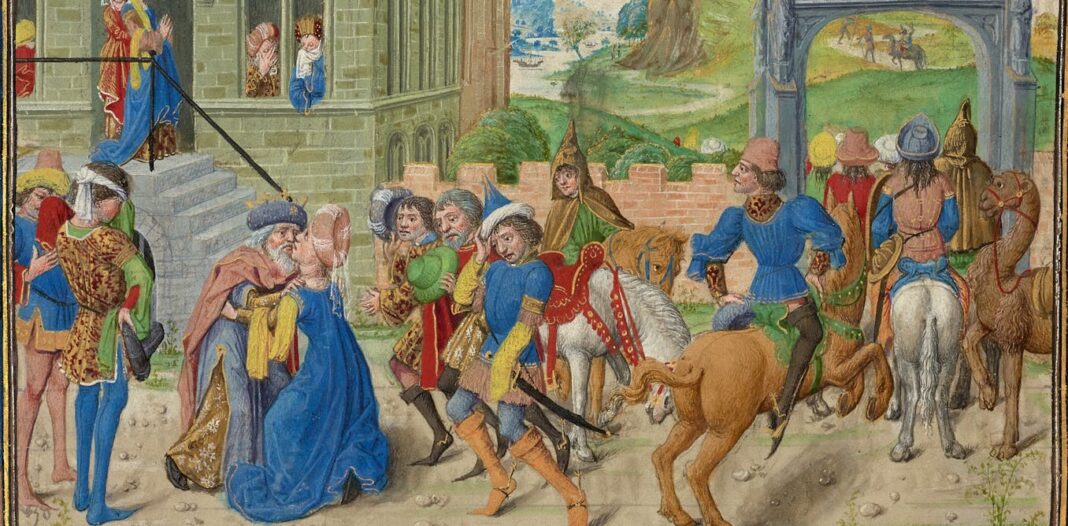From Good Sleep to ‘Good’ Leeches
One especially interesting set of practical health care instructions for travellers is the Of the government and the way of the journey and the end of the pilgrims (About the regimen and way of the journey for the traveller). The text was composed by Adam of Cremona in about 1227–28 for the German emperor Frederick II, who was about to set out on crusade.
Unedited and surviving in a single manuscript, Adam draws heavily on Ibn Sina’s 11th century Canon of Medicine, used for medical teaching in medieval universities.
Adam advised bloodletting (phlebotomy) should be performed prior to the emperor’s journey and then regularly throughout, depending on the “will and mood” of the stars.
Bloodletting was central to medieval medical practice. It used leeches or sharp knife-like instruments to nick the vein and cause blood to drain from the body. It was performed both preventatively and, in the case of some medieval religious communities, periodically as part of monastic bodily regulation and discipline.
Devoting some 25 chapters of his text to phlebotomy, Adam drew on the idea that bloodletting would regulate the humours (the four fluids thought to make up the body: blood, yellow bile, black bile and phlegm), evacuating “bad” ones and setting the body in balance to prepare for healthy travel.
While the concept of the four humours has since been abandoned by modern medicine, bloodletting and “leech therapy” continue to be performed in some medical settings for specific purposes.
Balancing Body and Spirit
Knowledge about water supplies was especially important for travellers.
One pilgrimage guide informed travellers one of the best sources of water in the holy land was just outside Haifa, in modern-day Israel.
Theodoric’s Guide for the Holy Land reminded travellers there was no water in Jerusalem other than the rainwater collected by inhabitants and stored in cisterns for daily use.
Medieval travellers were also reminded to take particular care of their feet. In 1260, Vincent of Beauvais gave instructions to travellers to use poultices (a dressing for wounds) made of oil, plants and quicksilver (mercury) to prevent and manage blisters – an all too frequent ailment experienced by pilgrims walking long distances.
Conclusion
Medieval travellers did not leave their fate entirely in God’s hands. Even the crusaders took precautionary measures to balance both bodily and spiritual health before and during their journeys.
They confessed sins, sought blessings to protect their property and baggage and carried with them charms and amulets that were thought to ensure “the health of body and protection of the soul”, as one 12th century Italian blessing explained. This “divine prophylaxis” ran alongside more practical care of the physical body – a holistic view of health as corporeal and spiritual.
FAQs
Q: What was the purpose of bloodletting in medieval medicine?
A: Bloodletting was performed to regulate the humours and balance the body’s fluids, evacuating “bad” ones and setting the body in balance to prepare for healthy travel.
Q: Why was water supply knowledge important for medieval travellers?
A: Water supply knowledge was crucial for medieval travellers as it was essential for maintaining good health, especially in hot and dry climates.
Q: What was the purpose of poultices in medieval medicine?
A: Poultices were used to prevent and manage blisters and wounds, especially for pilgrims walking long distances.
Q: What was the concept of the four humours?
A: The concept of the four humours was a medieval theory that the body was composed of four fluids: blood, yellow bile, black bile and phlegm, which needed to be balanced to maintain good health.




